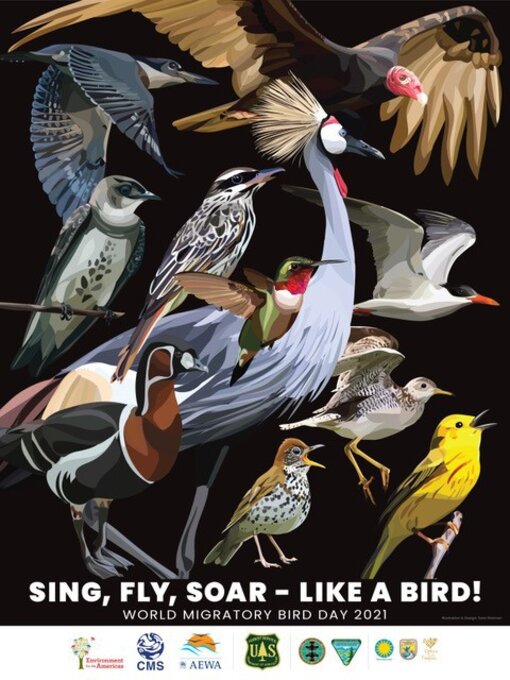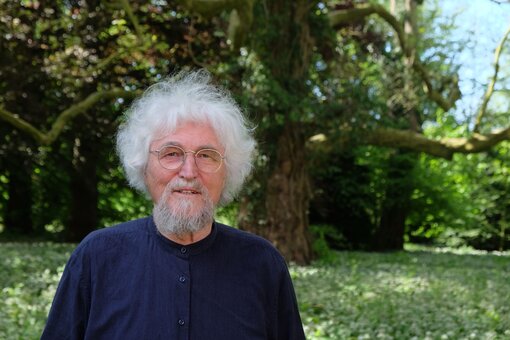“Sing, Fly, Soar – Like a Bird!” is the theme of this year’s World Migratory Bird Day (8. May & 9. October), an annual global campaign dedicated to raising awareness of migratory birds and the need for international cooperation to conserve them. This year the campaign will focus on the phenomena of “bird song” and “bird flight” as a way to inspire and connect people of all ages around the world in their shared desire to celebrate migratory birds and to unite in a common, global effort to protect birds and the habitats they need to survive
Our "Spread the Words"-statement by Prof. Dr. Hans Dieter Knapp (Michael Succow Foundation - member of advisory board) on World Migratory Bird Day 2021
Humanity is already experiencing its second COVID-19 pandemic spring. With all the restrictions in everyday life, especially with view to worldwide travel, our lives seem to have reached a deep standstill. Nature, on the other hand, continues to set its wheel of life in motion.
Today, once again, we woke up to the joyful singing of birds. In these times we should be more than grateful for the twittering of birds, at least this fills us with life and hope. There is more behind this song than just hope, the idea of freedom to cross borders, reach new migratory destinations and arrive safely. For the largest proportion of migratory species are migratory birds.
How many of them that can now be glimpsed outside our windows or linger in our gardens have made a long journey? How well did they arrive, and how long will they stay?
Even if it is claimed that the worldwide lockdowns, the so-called anthropic pause, is also a recovery pause for nature, the population of many birds, especially migratory birds, is still considered endangered. Due to the influence of humans, their habitats are changing, breeding sites are being lost, and finding food is becoming increasingly difficult. Migratory birds have it three times harder because they face challenges both at their breeding sites and wintering areas or resting places.
Due to climate change, many migratory birds are forced to shorten their stay in the winter quarters and change their departure times in autumn. They rest for shorter periods and fly on even faster. They are forced to adapt to the new circumstances.
Even though the change is already ongoing, we should not lose our mission: to do everything we can to preserve their habitats and to mitigate climate change. They are not only the spring herald in our lives but more a sign of how long nature can also continue to be our home.
The Central Asian Desert Initiative (CADI) (https://cadi.uni-greifswald.de) project of the Michael Succow Foundation has as its main objective the conservation and sustainable use of the cold winter deserts of Central Asia. These are not only unique landscapes but also important wide-ranging migration areas for birds, along the AEWA flyway, as well.
Globally threatened birds found year-round, breeding or migrating in the Eurasian cold winter deserts include Eastern Imperial Eagle (Aquila heliaca, IUCN VU), the Asian Houbara (Chlamydotis macqueenii, IUCN VU), the Saker Falcon (Falco cherrug, IUCN EN), the Egyptian Vulture (Neophron percnopterus, IUCN EN), the Yellow-eyed Pigeon (Columba eversmanni, IUCN VU), Sociable Lapwing Vanellus gregarius, IUCN CR), or White headed duck (Oxyura leucocephala, IUCN EN).
The Egyptian vulture is increasingly impressing us with how far its route stretches: from Southern Europe to Central Asia and from Eastern Africa to Southern Asia. Yet, it is the smallest of the four European vulture species and the only one considered endangered worldwide.
Together with our partners in the target countries Kazakhstan, Turkmenistan, and Uzbekistan, we aim to preserve the unique cold winter deserts, that spread from Northern Iran across Central Asia to Mongolia, continue to provide the habitats for many migratory birds.
Let us be inspired by these species not only for cross-border travel but more for cross-national and cross-border cooperation to protect migratory birds.
![[Translate to EN:] Banner Stiftung](/fileadmin/_processed_/b/c/csm_banner-stiftung_fee6c1c492.jpg)

